Pumpkins Are Threatened By These 5 Pests
Pumpkins Are Threatened By These 5 Pests
Summary: Pumpkins are a fall essential, but unfortunately, they also attract hungry pests. This blog describes the habits and life cycles of 5 infamous pumpkin pests. The pests listed here are: thrips, cucumber beetles, . Each pest’s section comes with a short list of signs that this pest is currently invading a pumpkin. Homeowners and pumpkin-growers are encouraged to keep an eye out for these pests and their voracious appetites. At the end, the targeted treatments from Green Pest Services are suggested as the best way to protect a house from pests this fall.
Pumpkins are the most iconic fall decoration, hands down. Whether you arrange a bunch of mini pumpkins in a basket or carve a giant one into a jack-o-lantern, pumpkins are an essential component to autumn. Many of us simply go to the grocery store or pumpkin patch to get our pumpkins because, well, it’s convenient. Plus, nothing beats a walk around the pumpkin patch with a cup of fresh cider in your hand!
But for those of you who grow your own pumpkins, you have a bit more responsibility on your hands. Anyone who grows their own produce knows the importance of protecting it from harsh weather and hungry pests, but we’re going to focus on the latter threat here. Let’s discuss 5 of the most persistent pumpkin pests to learn why they invade these gourds and make them even spookier-looking than usual.
Thrips
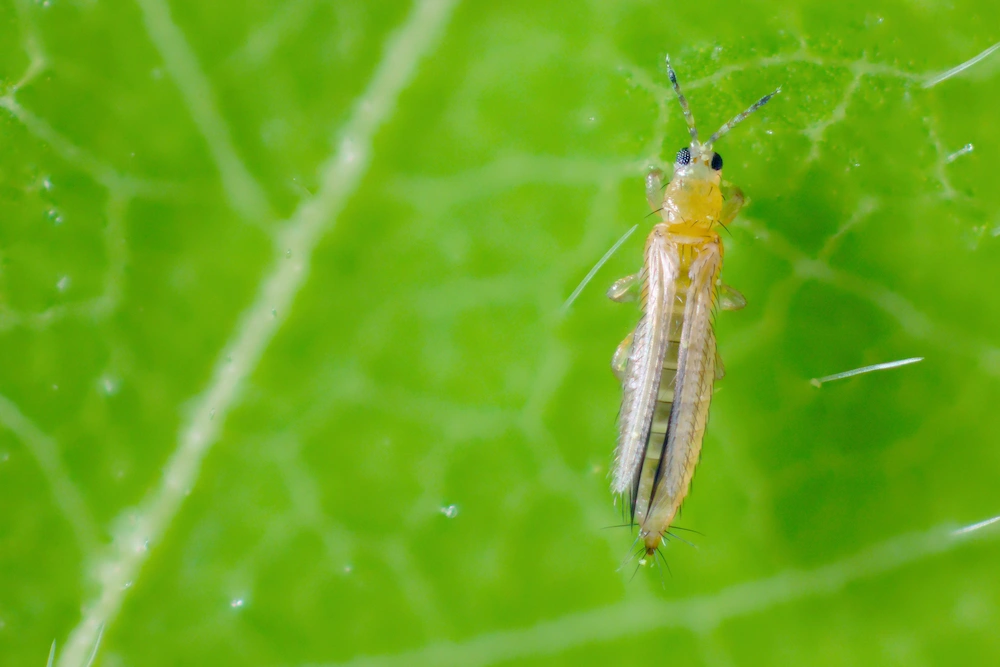
Clues: distorted leaves, silvery tint to leaves, dark droppings on leaves
Thrips are a common garden pest — as are all of these pumpkin pests — so it makes sense that they also enjoy pumpkins. It’s tricker to catch thrips before they hurt your pumpkins because they’re so small! Larvae are even smaller than the adults, but they still cause issues for your pumpkins. They’re usually seen feeding on the leaves, appearing as yellow spots on the greenery.
Although thrips are tiny, they can cause a world of hurt to pumpkins and gardens. These pests are the main transmitters of tomato spotted wilt virus (what a name). The disease shows itself through coppery spots and blotches on leaves and produce. Tomatoes and onions are the usual victims, so it’s best to plant your pumpkins away from other vegetables. Thrips carry the virus forever once they eat an infected fruit, so you don’t want them moving into your garden!
Cucumber Beetles
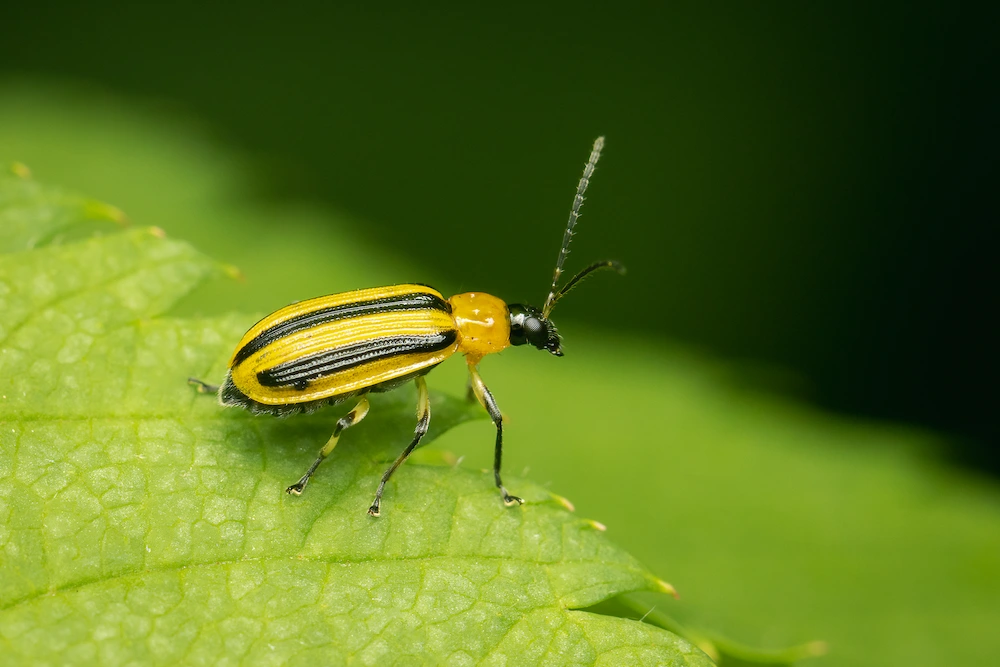
Clues: holes in the pumpkins, wilting leaves, small holes in leaves, damage to leaves and pumpkins
It may sound like a mistake to include cucumber beetles on this list since pumpkins aren’t cucumbers, but these pests must not be very picky. In fact, they’re known as the most frequent pumpkin pests. Cucumber beetles overwinter in soil, then emerge in the warm weather to devour sprouts and roots. They blend in with their surroundings, thanks to their yellow or green coloring and dark stripes.
Adult cucumber beetles are the most destructive since they destroy every ripe fruit that the larvae left behind. The more that cucumber beetles feed on pumpkins (and other crops), the more they will stunt the growth of the plants. If you till the soil around each plant, you can find the beetles before they ruin your pumpkins. They start burrowing in the fall, so protect your springtime crops by tilling the soil now!
Aphids
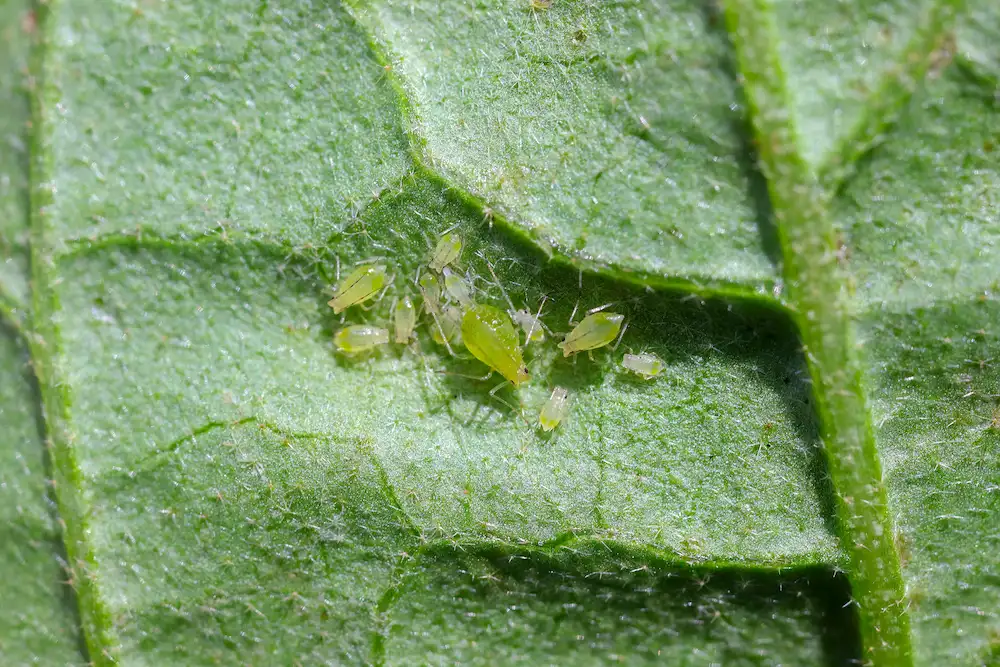
Clues: curling leaves, yellow or distorted leaves, honeydew spots, lower pumpkin yield than usual
These might be the most infamous garden pests in existence, so of course they destroy pumpkins. Aphids use their piercing mouthparts to pierce leaves and stems, then drink the sap that flows out. These pests hide under the leaves while they feed and reproduce, making it easy for them to gradually ruin the plant. As pumpkins and crops lose their vital juices, they are unable to grow pristine fruits and vegetables.
The bright news of aphids is that they’re already managed by cool weather and carnivorous insects. Ladybugs and lacewings are still alive in the fall, so these beneficial insects are currently helping us reduce the aphid population. If you see these pests on your pumpkins, there’s a good chance you have a hidden aphid issue. Check those leaves for hungry green bugs that could make your fall a pumpkin-less one!
Squash Bugs
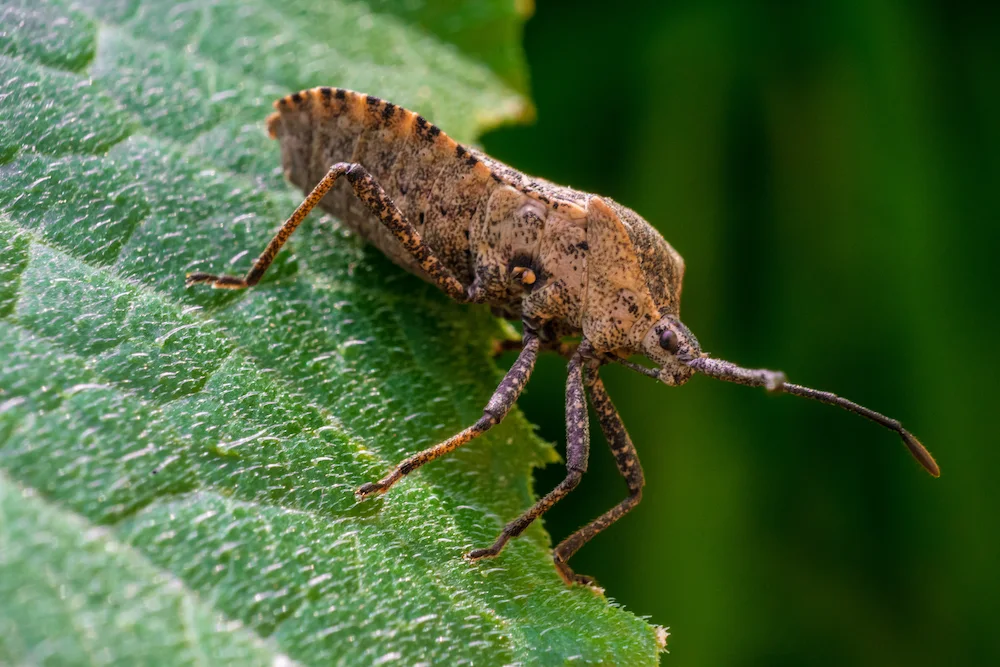
Clues: yellow/dark spots on leaves, small bugs crawling on the pumpkins, wilting leaves
While the cucumber beetle sounds like a mistake, the squash bug seems like the most natural fit on this list. They eat every part of the pumpkin, so squash bugs ruin this fall produce much faster than other pests. Since squash bugs have gray coloring with stripes, they’re usually mistaken for boxelders. The best way to tell the difference is with their diets: squash bugs eat pumpkins and fruits, while boxelders eat boxelder trees (of course) and their leaves.
In the spring, squash bugs lay their red eggs under the leaves of new fruits. This gives their larvae an immediate food source. Adult squash bugs devour the sap from stems and leaves, causing the pumpkin plants to wilt. These pests hide under mulch in between feedings, so squash bugs are tough to find before it’s too late for the poor pumpkins. Look out for dark bugs crawling all over the pumpkins, and squash the squash bugs when you get the chance!
Cutworms
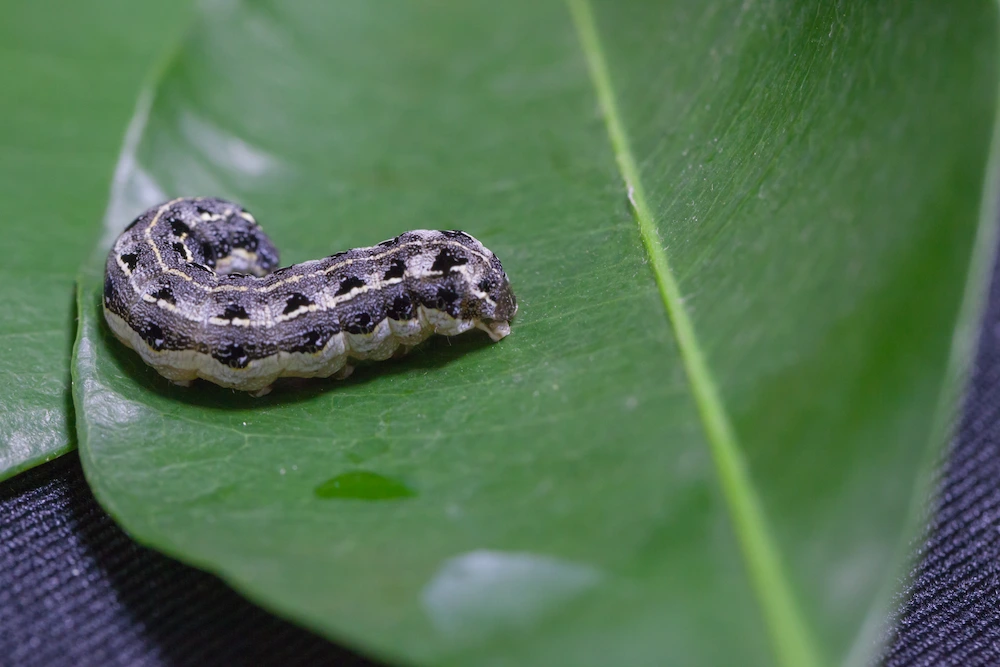
Clues: larvae living on stems or in the soil, severed stems, holes in the pumpkins
Cutworms are the natural enemy to new gardens, mainly because of the pest’s deluxe diet and hiding abilities. They eat many types of vegetables, including peas, peppers, carrots, and tomatoes. Pumpkins also fall under the category of their favorite foods because the gourd stays low to the ground throughout their growth process. Cutworms sever stalks and stems, as well as create noticeable marks on the pumpkins.
These marks can be more than just eyesores. If cutworms are left to feast on young pumpkins, they can stunt the growth of the gourds. Cutworms are also nocturnal and hide in the soil, so you might not see them until they’ve already harmed your crops. There’s an easy way to know if the thick worm on your pumpkin is a cutworm. Tap on the pumpkin near the pest, and if it’s a cutworm, it will curl into a C-shape. You can pluck it off either way, but it’s nice to know the pest’s identity before you do so!
Green Always Provides “Gourd” Pest Control
Pumpkin pests aren’t fun, but do you know what is? Efficient solutions from Green Pest Services! Our experienced technicians eliminate pumpkin pests before they set their sights on your house. Pests start searching for their winter shelters in the fall, so it’s essential to protect your home against the invasive species. We eliminate your current pests and prevent future ones by providing a protective barrier around your home. Our team is prepared to solve pest problems of all shapes and sizes, as we are dedicated to keeping you pest-free in every season. For more information on our preventative pest control services, contact us today!
Citations
Baessler, L. (2022, June 20). Pumpkin insect control – Dealing with pumpkin insect pests. Gardening Know How. Available at https://www.gardeningknowhow.com/edible/vegetables/pumpkin/pumpkin-insect-pests.htm (Accessed on September 30, 2024).
DeAngelis, Z. (n.d.). 7 bugs and insects that love eating pumpkins (repel them!). Pest Pointers. Available at https://pestpointers.com/bugs-and-insects-that-love-eating-pumpkins-repel-them/# (Accessed on September 30, 2024).
Plante, A. (n.d.). How to grow pumpkins. HGTV. Available at https://www.hgtv.com/outdoors/flowers-and-plants/vegetables/growing-pumpkins (Accessed on September 30, 2024).
Pumpkin. (n.d.). PSU Plant Village. Retrieved September 30, 2024, from https://plantvillage.psu.edu/topics/pumpkin/infos
Tomato spotted wilt. (2013, December). UC IPM. Retrieved September 30, 2024, from https://www2.ipm.ucanr.edu/agriculture/tomato/Tomato-Spotted-Wilt/
The Scariest Pests (And Why They Freak Us Out)
The Scariest Pests (And Why They Freak Us Out) The Scariest Pests (And Why They Freak Us Out) Summary: A practical, homeowner-friendly guide [...]
Favorite Foods of Rats and Mice
Favorite Foods of Rats and Mice Favorite Foods of Rats and Mice Summary: Rats and mice are surprisingly picky about what they eat—especially [...]
Where Do Spiders Like to Hide? A Locals’ Guide to Sneaky Spider Spots (and What to Do About Them)
Where Do Spiders Like to Hide? A Locals’ Guide to Sneaky Spider Spots (and What to Do About Them) Where Do Spiders Like to Hide? [...]
Why Do We See So Many Pests in the Fall?
Why Do We See So Many Pests in the Fall? Why Do We See So Many Pests in the Fall? Summary: Fall’s cooler [...]
Why German Cockroaches are Such Problem Pests (And How to Get Rid of Them)
Why German Cockroaches are Such Problem Pests (And How to Get Rid of Them) Why German Cockroaches are Such Problem Pests (And How to Get [...]
Summer is Ending, But Pests are Still Going Strong
Summer is Ending, But Pests are Still Going Strong Summer is Ending, But Pests are Still Going Strong Summary: Summer is coming to [...]

